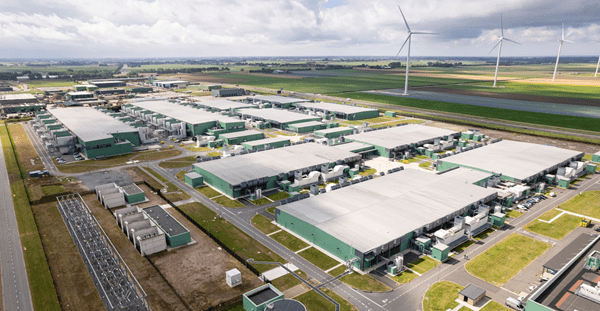Building Infrastructure – Electricity Transmission
The GB electricity Transmission Owners hold the key to the UK’s energy transition but face huge challenges delivering their investment programmes. Mark Docherty and Simon Rawlinson of Arcadis summarise the current state of play.
Introduction – the opportunity of the UK’s grid upgrade.

Long before the Government committed to delivering a Net-Zero electricity network by 2030, The UK’s 3rd electricity revolution was well underway. Announcements made at the recent International Investment Summit including Iberdrola’s pledge to double UK capex through Scottish Power to £24 billion are the product of years of effort in the refinement of regulation, development of project proposals and raising of finance.
The GB Transmission Owners (TOs) plan to invest £20billion in twenty-six strategic projects under the regulator’s Accelerated Strategic Transmission Investment (ASTI) framework. The TOs will also continue to maintain and enhance the existing 8,600km grid, with a new price control period, RIIO-ET3, commencing in 2026. The period to 2040 will see investment of a further £58bn according to the National Energy System Operator’s (NESO) Beyond 2030 report, published in March 2024.
-
READ MORE
The 2030 grid challenge.

The transmission grid has a crucial role in enabling the net-zero transition. Offshore wind farm developers depend on timely completion of new HVDC converter stations to export their output. Additional supergrid expansion and reinforcement is required to address emerging capacity constraints and new grid services from storage and stability providers will need transmission connections.
Issues that contribute to the complexity of the challenge include:
-
Complexity of a renewables-based network.
-
Diverse network solutions.
-
Simultaneous demand.
-
Concentrated supply chains.
-
Stakeholder buy-in to proposals through the planning process is of course a major blocker.
-
Specialist skills.
Box feature – critical trade-offs in grid design.

Transmission grids can be visually intrusive and inevitably generate high levels of opposition from local populations affected by the new infrastructure. In general, the GB TOs confirmed that HVAC OHL would be their preferred network expansion and reinforcement approach in 2023, which has helped to provide some clarity to the planning process. In the context of the GB transmission network, HVAC OHL networks provide an optimum combination of whole life cost, efficiency, reliability, and maintainability. Buried cables are also used in locations that are visually sensitive although the installation process can be disruptive. A double-circuit transmission cable swathe can be over sixty metres in width. Although there will be some access structures and potentially some legacy limitations on planting, underground installations are usually difficult to spot once vegetation is reestablished.
-
READ MORE
Box feature – experience from Europe.

Arcadis has a prominent role in the design and delivery of transmission grids in Europe including delivery via EPCM of new grid infrastructure for TO, TenneT in Germany and the Netherlands. Our experience highlights the shared challenges faced by all TOs as well as some of the comparative advantages that some countries have because of ownership or regulation.
Commonalities between TOs include a lack of common standards between the grids within a country as well as the universal challenge of securing access to equipment and cable OEMs. Public procurement regulations are another common factor. TenneT is owned by the Dutch State and is the sole Transmission and System Operator (TSO) for the Netherlands. However, the legacy grid was developed on a regional basis by multiple network operators, and as a result is subject to similar levels of variation in standards seen across Germany. As a State-owned entity, TenneT is publicly accountable but is not subject to the same level of competition regulation seen in the UK and Germany. This creates some freedoms, such as the ability to set technical standards and to pre-purchase cable and equipment in advance of production. For example, over 5,000 km of HVAC cable has been secured at a cost of €4.8 billion. As a single entity, TenneT in the Netherlands is also able to standardise new requirements – particularly with respect to the technical and civils design for new connections to wind parks in the North Sea.
-
READ MORE
Procurement – finding the best fit option.

For transmission, procurement strategy must address three key objectives:
- Access to critical supply chain capacity
- Development of a commercial model that assures timely delivery and achieves an optimum risk allocation.
- Achievement and demonstration of efficiency and value for money to protect customer interests and to assure returns on investment.
Procurement doesn’t take place in a vacuum and the GB TOs are competing with public and private sector utilities across Europe for the same equipment and cable supply chain. Although all work is let using public procurement processes, some utilities have a head start, such as TenneT in the Netherlands (See Box Feature)
-
READ MORE
The transmission sector is a key link in the chain that will deliver a net zero future. The UK’s current investment push aims to decarbonise the existing grid, but that is only the first step in the challenge. Transmission grids will continue to expand to accommodate the increases in power generation capacity required for heating, EV charging and industrial processes. electricity distribution grids will also require extensive reinforcement over time to cope with new loads and new connections. In line with the 2050 Net Zero target, this process will happen everywhere – the resource shortages seen today are the new normal, not a one-off blip. Lessons learned through this first phase of grid expansion will continue to be essential, long into the future.
Originally published in Building






